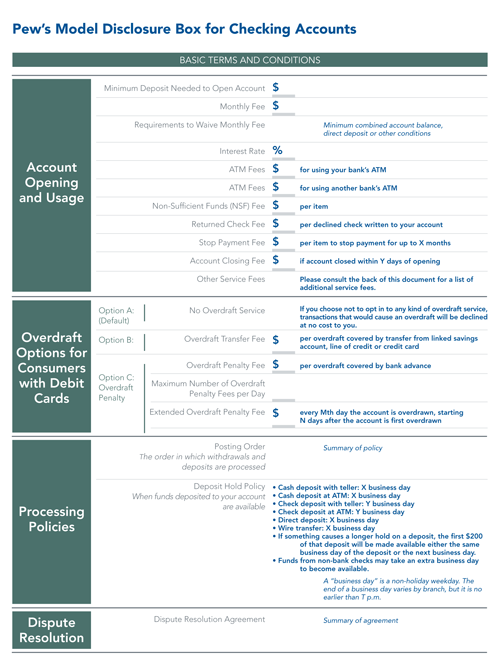Checking Accounts
Long on Words, Short on Protections – the Need for a Disclosure Box
The Pew Health Group's Safe Checking in the Electronic Age Project released a study of checking account terms and conditions in April 2011. Pew's research showed that the median length of bank disclosures for key checking account policies and fee information was 111 pages. Based on this finding, Pew developed a model disclosure form, similar to a nutrition label for food or a Schumer Box for credit card offers. This model disclosure box would provide consumers with clear and consolidated information about the key fees, terms and conditions of their checking account. Researchers tested the disclosure box with consumers who said the box would be a useful and valuable tool when opening an account. The one-pager would also help consumers understand banking fees and important policies when comparing bank checking accounts.







